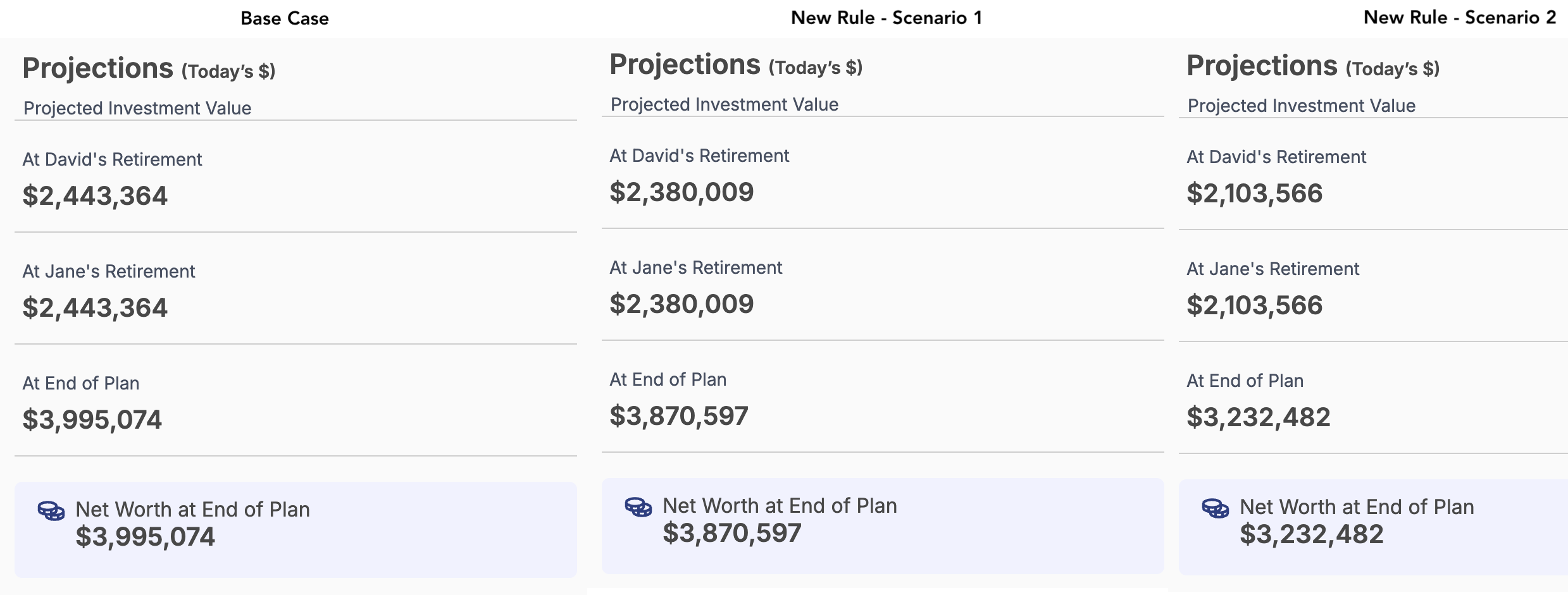Key points
- Higher earners (making $145,000 in salary or more) who contribute to a workplace retirement plan must make catch-up contributions to a Roth account starting in 2026.
- If your 401(k) plan doesn’t even offer a Roth option, you won’t be able to make catch-up contributions at all.
- Employers and plans have until 2027 to fully implement the rules, giving some flexibility during the transition.
- Workers age 60–63 can take advantage of larger “super catch-up” contributions beginning in 2025.

If you’re over age 50 and using a workplace retirement plan like a 401(k), you’re probably familiar with catch-up contributions, the extra savings allowed above the standard contribution limit. These contributions are designed to help people nearing retirement bolster their nest egg.
There are new rules that will change how higher earners make these catch-up contributions. The IRS recently finalized guidance that clarifies when these changes officially kick in and how employers should handle them.
What’s Changing Under SECURE 2.0
The SECURE 2.0 Act, passed in 2022, introduced a rule requiring certain higher-income workers to make catch-up contributions on a Roth basis instead of pre-tax. Here’s what that means in practice:
- Who it applies to: Employees age 50 or older earning $145,000 or more in wages from the previous year. It is important to note that the threshold applies to wages only, not total income that contains investment or other income.
- What it requires: Instead of making catch-up contributions to an employer retirement plan with pre-tax dollars (which lower taxable income today), those contributions must be made to a Roth account. That means paying taxes upfront, but withdrawals in retirement will be tax-free.
- Who is exempt: Workers earning $144,999 or less can still make pre-tax catch-up contributions if they choose.
For example, in 2025 the standard 401(k) contribution limit is $23,500. If you’re 50 or older, you can also contribute an extra $7,500 in catch-up contributions, bringing your total to $31,000. Under the new rules, the $23,500 could remain pre-tax, but the $7,500 catch-up must go into a Roth account.
Applying This in Real Life
Under the current rule, a high-earning couple (both aged 50) can each contribute $31,000 annually to their 401(k), fully pre-tax. At a 24% marginal tax rate, this provides $14,880 in tax savings each year, which they choose to invest in their children’s 529 college plans. Over 10 years, this strategy significantly boosts their projected investment balances.
Using these base assumptions, we can look at their projected investment values below in their financial plan in WealthTrace.

However, under the new rule, $7,500 of each person’s contribution ($15,000 total) is no longer tax-deductible, reducing their annual tax savings by $3,600 (24% marginal tax rate * 15,000). This lowers the amount they can contribute to their kids’ 529 plans and changes how their savings grow over time. If they redirect the $7,500 each into Roth accounts (after-tax), and reduce their 529 contributions accordingly, their projected ending investment balance is $124,477 lower.
If they don’t use Roths and just invest the $5,600 of tax savings in a Money Market account instead, the impact is even worse - a $762,592 reduction in their projected investment balance.
The new rule penalizes high earners by reducing their ability to take advantage of pre-tax retirement contributions, which in turn lowers their tax savings and diminishes long-term investment growth, even if they try to adjust by using Roths or alternative savings strategies.
When the New Rules Take Effect
The IRS has clarified the timeline for this change:
- The Roth catch-up rule technically applies beginning January 1, 2026.
- However, most retirement plans will not need to fully comply until after December 31, 2026.
- This gives employers and plan providers until 2027 to make the necessary adjustments.
Governmental plans and those under collective bargaining agreements may have additional time.
Importantly, the IRS stated that employers who implement the Roth requirement before 2027 can rely on a reasonable, good faith interpretation of the law. In other words, there’s flexibility as everyone transitions.
Other Key Clarifications
The IRS final rules addressed several practical concerns for both employers and employees:
- Determining income thresholds: If an employee works for related companies within a controlled group, wages from all entities can be combined to decide whether the $145,000 threshold is met.
- Fixing mistakes: If a catch-up contribution is accidentally made pre-tax instead of Roth, plans have until the end of the following plan year to correct the error.
- Administrative relief: This correction period is designed to reduce headaches for both employers and employees as they adapt to the new system.
Why the Delay Happened
The delay didn’t come out of nowhere. Over 200 organizations, including major corporations like Microsoft, Schwab, and Delta, had urged Congress to allow more time for employers to update payroll systems and retirement plans. The IRS ultimately gave plans the breathing room they asked for.
The “Super Catch-Up” for Ages 60–63
Another provision of SECURE 2.0 gives workers between ages 60 and 63 an enhanced catch-up limit, starting in 2025. For that age group, the catch-up limit increases to $11,250 (indexed for inflation). This allows those closest to retirement an even greater opportunity to save.
The Bottom Line
For now, employees over 50 can continue making catch-up contributions as usual. But starting in 2026, if you earn $145,000 or more, those contributions will need to go into a Roth account. That means you’ll lose the immediate tax deduction but gain tax-free withdrawals later.
If you're nearing retirement, these changes could have a meaningful impact on your plan. This is a great opportunity to revisit your WealthTrace projections to see if Roth contributions will be required and how they might influence your retirement outlook.
Do you know how much you need to contribute to a retirement account to retire comfortably? If you aren’t sure, sign up for a free trial of WealthTrace to build your financial and retirement plan today.